DEATH
A SURVIVAL GUIDE
DEATH
A SURVIVAL GUIDE
100 Ways We Die and
How to Avoid Them
Dr. SARAH BREWER
Contents
Introduction
People who die are always loved individuals rather than statistics. But sometimes there is no alternative to dicing with death and playing a numbers game. Sadly, despite increased medical advances and an aging population, the global death rate remains constant at 100%. There is no cure. Despite millions of pounds, dollars and euros spent on research, death remains the number one killer world-wide. Good health is just the slowest possible route to getting there.
Death may be the only certainty in life, but how it gets you is anything but predictable. There are lots of ways to die. At least 100 are described in this book. You could fall off a ladder or be hit by a falling coconut, bitten by a snake, struck by lightning or shot by gangsters. You could even succumb in a plane crashand you dont have to be on the plane to die.
However, according to the World Health Organization, the list of most frequent last gasps across the globe is topped by coronary heart disease, stroke and infections.

The top ten killers vary depending on a countrys level of sanitation and clean water, exposure to pathogens, nutritional quality and access to medical treatments. Depending on whether you live in a rich, poor or middling economic climate, your risk of death is shown in the table below.
In this world nothing is certain except death and taxes.
Benjamin Franklin
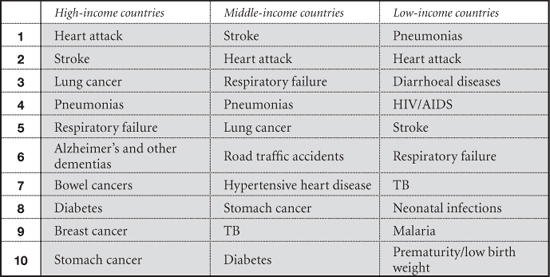
The same risk factors underpin all these causes of death, howeverthe usual suspects are smoking, uncorrected high blood pressure, uncontrolled high blood glucose, lack of exercise and being overweight or obese. Infection also plays an increasingly important role as income decreases.
Life expectancy
For many people, a populations life expectancy is considered the best measure of overall health. According to a comprehensive study of adult mortality published in The Lancet, the countries with the highest life expectancy are as follows:
The highest risk of mortality is for men in Swaziland, and women in Zambia.
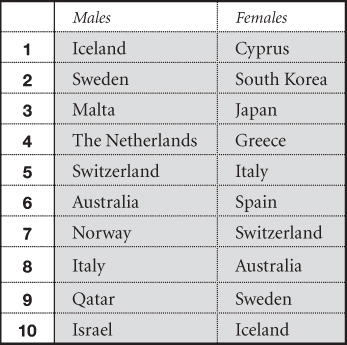
DID YOU KNOW?
Every year, 59 million people diealmost 1% of the population. That adds up to more than 161,600 people every day, 6735 per hour, 112 per minute or 1.87 deaths every second, on average.

Quality of life
While longevity is important, other factors affect whether or not you enjoy your prolonged years. In 2008, Forbes magazine compiled a list of the worlds healthiest countries using a variety of data from the World Health Organization, World Bank and United Nations. As well as longevity, they looked at factors such as levels of air pollution, access to clean water, good sanitation, low levels of certain diseases (most notably tuberculosis), infant mortality rates and undernourishment. They also looked at standards of health care, which were assessed on the number of doctors per 1000 head of population. Out of 138 nations, their top 15 healthiest countries were:
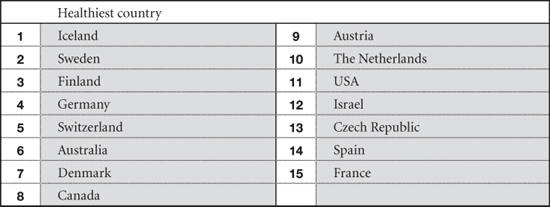
Assessing health based on happiness
Some would argue that its no good having a long life, flushable toilets and money in the bank if these dont make you happy. The World Database of Happiness therefore drew up an International League Table based on scientific research into the subjective appreciation of life. Out of 95 countries assessed in 2009 by the Erasmus University in Rotterdam, the following were rated as happiest overall:
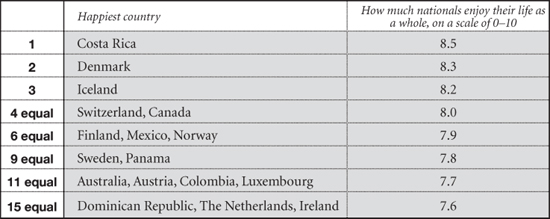
Overall, it would seem that if you want to live the longest, healthiest, happiest life you should undoubtedly move to Iceland, Sweden, Finland or Norway. Perhaps it has to do with all those long, cold nights spent snuggling up in bed with your partner.
Raising your stakes in the survival game
We all want to live longer and enjoy a happier, healthier lifespan. Most of us know the nutritional and lifestyle steps required to achieve this. Its putting them into action that is troublesome. Follow these non-guaranteed top tips:
Maintain a healthy weightlose any excess weight slowly so it is more likely to stay off.
Exercise regularly, for at least 30 to 60 minutes every day.
Dont smoke, ever.
Drink alcohol in moderation.
Eat more fruit and vegetablesfive to ten portions per day.
Cut back on overall fat intake and concentrate on obtaining healthy fats (omega-3s, monounsaturates) in place of saturated fats.
Cut back on carbohydrate intake and concentrate on following a diet that has minimal impact on blood glucose levels (low glycaemic load).
Drink sufficient fluids to maintain pale-colored urine.
Heed the prevention boxes in each of the following 100 modes of death.
1 AIDS
Since it was first clinically identified in 1981, acquired immune deficiency syndrome or AIDS has infected more than 60 million people, killed over 25 million and orphaned 14 million children. No effective vaccine or cure is currently in sight.
 How common is it?
How common is it?
An estimated 1.8 million AIDS-related deaths occur each year, including over a quarter of a million children.
 Who dies?
Who dies?
Those with an overwhelming suppression of immunity as a result of HIV infection.
 Where?
Where?
Occurs all over the world, but particularly in sub-Saharan Africa.
 When?
When?
Without antiviral treatment, HIV progresses to AIDS within 115 years (typically 10 years), and someone with AIDS will die within 1 year. Treatment greatly increases life expectancy by reducing viral replication.
 Why?
Why?
Exposure to the human immunodeficiency virus from infected body fluids.
Despite what ill-informed deniers have claimed, AIDS is caused by the human immunodeficiency virus (HIV). However, HIV may not progress to AIDS in every case. Although the annual number of new HIV infections and AIDS-related deaths have both steadily declined since 1999 (owing to improved education and treatment), the number of people living with HIV has increased. In 2009, an estimated 33,300,000 people were living with HIV, of whom 22,500,000 were in sub-Saharan Africa.
Next page







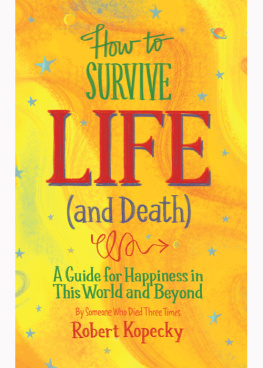
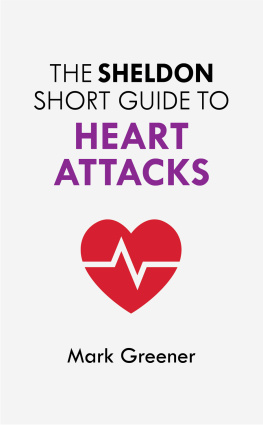




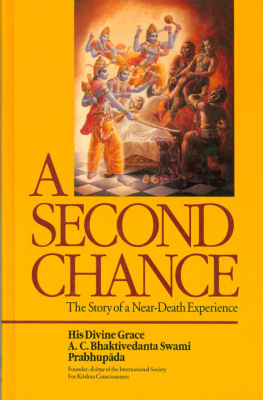

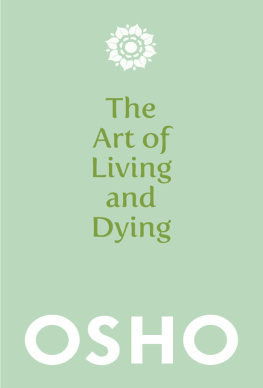






 How common is it?
How common is it?